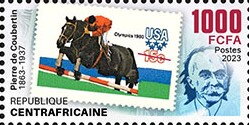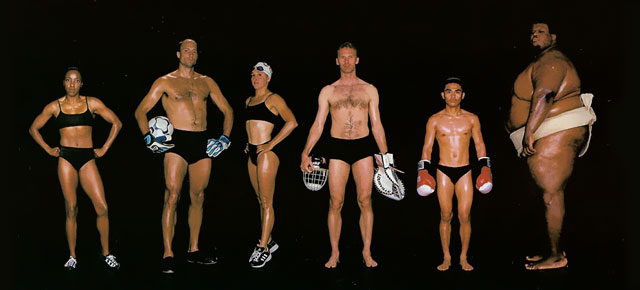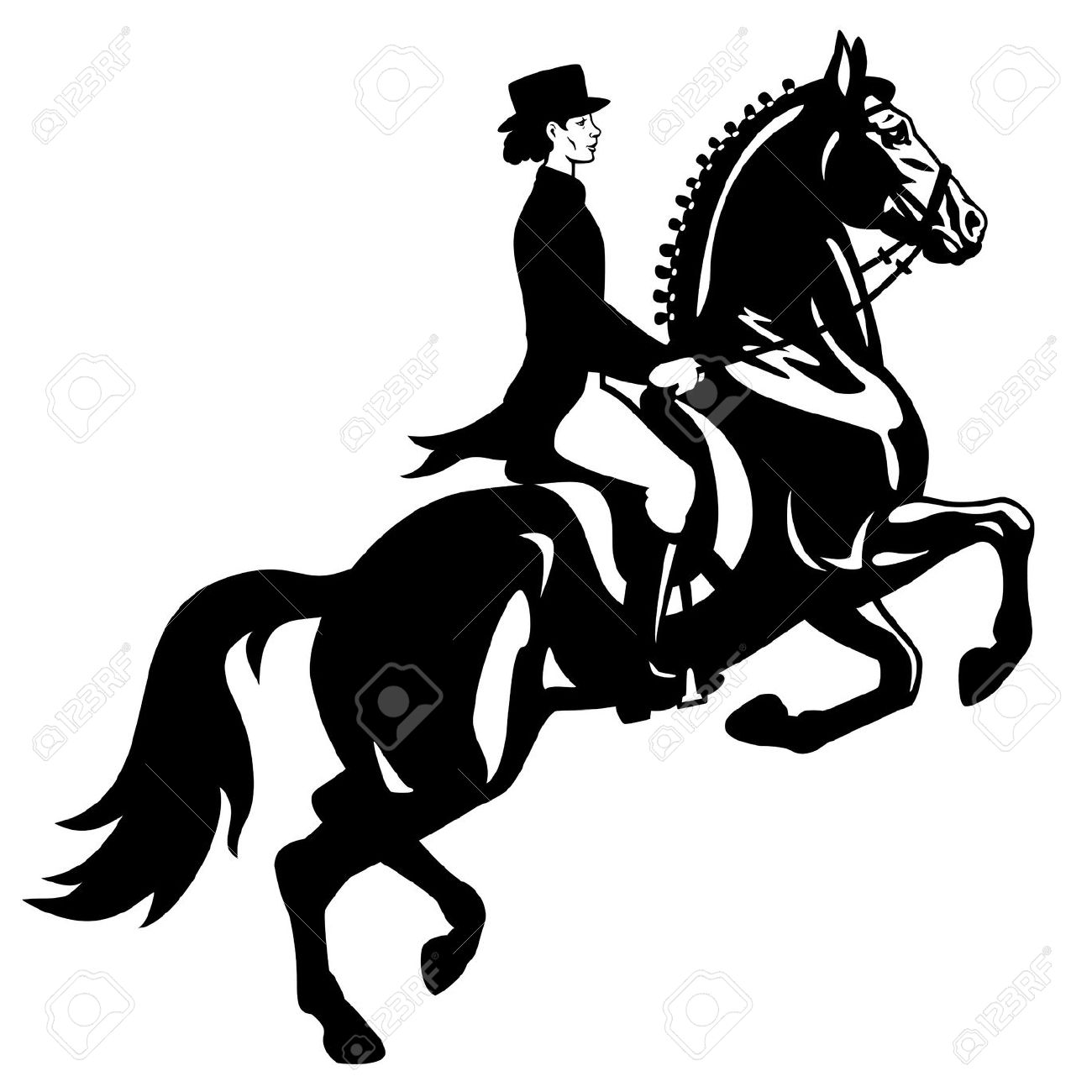Stamp: 160th anniversary of Pierre de Coubertin (1863–1937) (Central African Republic 2023)
160th anniversary of Pierre de Coubertin (1863–1937) (Central African Republic 2023)
10 February (Central African Republic ) within release Pierre de Coubertin (2023) goes into circulation Stamp 160th anniversary of Pierre de Coubertin (1863–1937) face value 1,000 Central African CFA franc
| Stamp 160th anniversary of Pierre de Coubertin (1863–1937) in catalogues | |
|---|---|
| Yvert et Tellier: | Yt: CF 10562 |
Stamp is square format.
Also in the issue Pierre de Coubertin (2023):
- Mini Sheet - 160th Anniversary of the Birth of Pierre de Coubertin face value 4*1000;
- Souvenir Sheet - Pierre de Coubertin (1863–1937) face value 3,600;
- Stamp - 160th anniversary of Pierre de Coubertin (1863–1937) face value 1,000;
- Stamp - 160th anniversary of Pierre de Coubertin (1863–1937) face value 1,000;
- Stamp - 160th anniversary of Pierre de Coubertin (1863–1937) face value 1,000;
- Stamp - 160th anniversary of Pierre de Coubertin (1863–1937) face value 1,000;
- Mini Sheet - Pierre de Coubertin (1863–1937) face value 3*1000;
- Mini Sheet - Pierre de Coubertin (1863–1937) face value 3*1000;
- Mini Sheet - Pierre de Coubertin (1863–1937) face value 3*1000;
- Mini Sheet - Pierre de Coubertin (1863–1937) face value 4*1000;
Stamp 160th anniversary of Pierre de Coubertin (1863–1937) it reflects the thematic directions:
An anniversary is the date on which an event took place or an institution was founded in a previous year, and may also refer to the commemoration or celebration of that event. For example, the first event is the initial occurrence or, if planned, the inaugural of the event. One year later would be the first anniversary of that event. The word was first used for Catholic feasts to commemorate saints. Most countries celebrate national anniversaries, typically called national days. These could be the date of independence of the nation or the adoption of a new constitution or form of government. The important dates in a sitting monarch's reign may also be commemorated, an event often referred to as a "Jubilee".
An athlete is most commonly a person who competes in one or more sports involving physical strength, speed, power, or endurance. Sometimes, the word "athlete" is used to refer specifically to sport of athletics competitors, i.e. including track and field and marathon runners but excluding e.g. swimmers, footballers or basketball players. However in other contexts (mainly in the United States) it is used to refer to all athletics (physical culture) participants of any sport. For the latter definition, the word sportsperson or its gendered sportsman or sportswoman are also used. A third definition is also sometimes used meaning anyone who is physically fit regardless of whether or not they compete in a spo
Stemming from military practices and a long tradition of teaching by equestrians such as La Guérinière and François Baucher, traditional French equestrianism is essentially represented at the Cadre Noir de Saumur. The practice of equestrianism has evolved towards sport and leisure, opening up to the general public. At the end of the 20th century, the sport became much more democratic, with a sharp rise in the number of riders, particularly young people and women. The teaching of equestrianism as a leisure sport in France is based on the existence of over 8,000 riding schools, which make trained horses available to the public. Their establishment is supported by the French government thanks to a reduced VAT rate from 2004 to 2013. At the end of 2013, riders and industry professionals protested against the increase in VAT on their activity.



